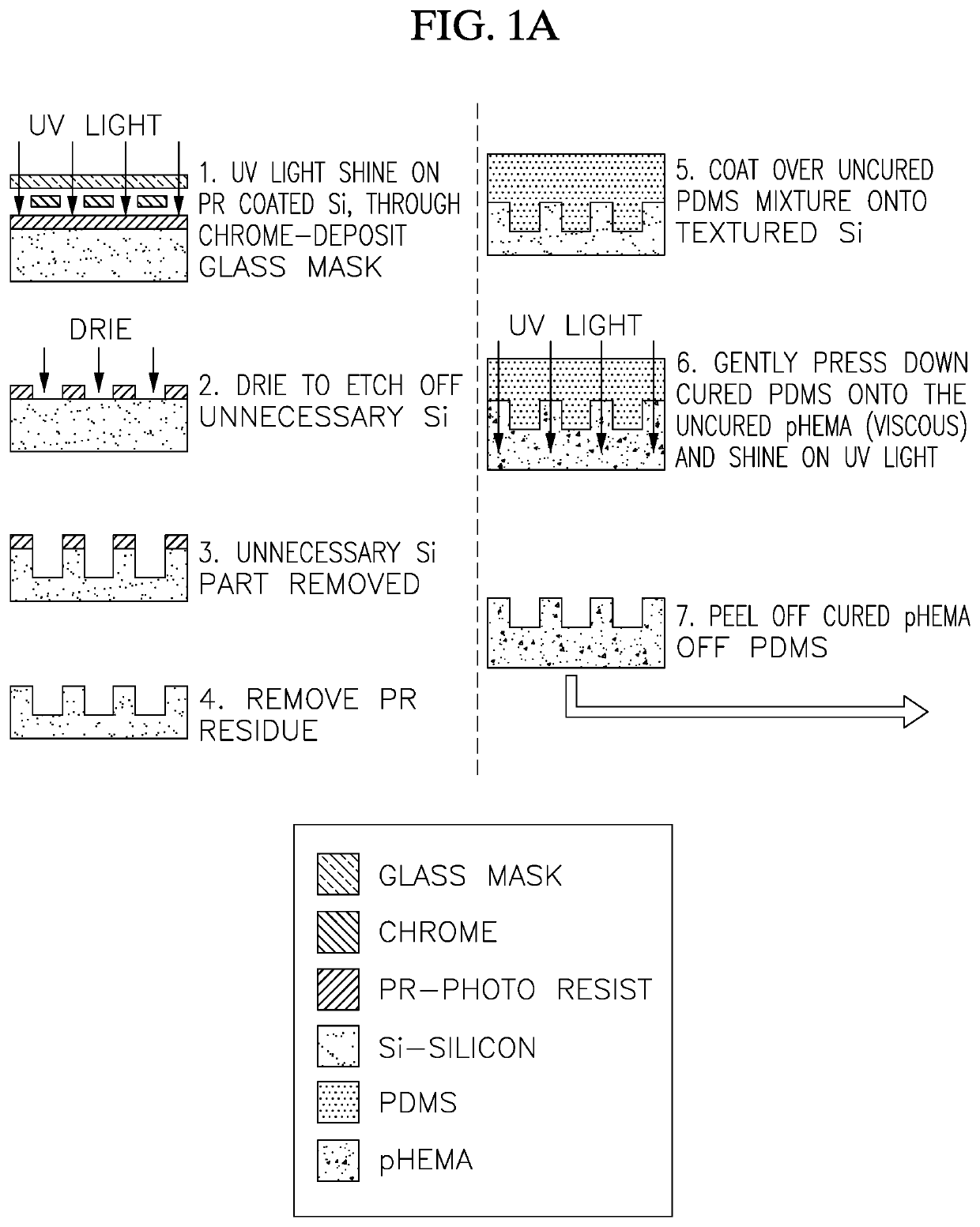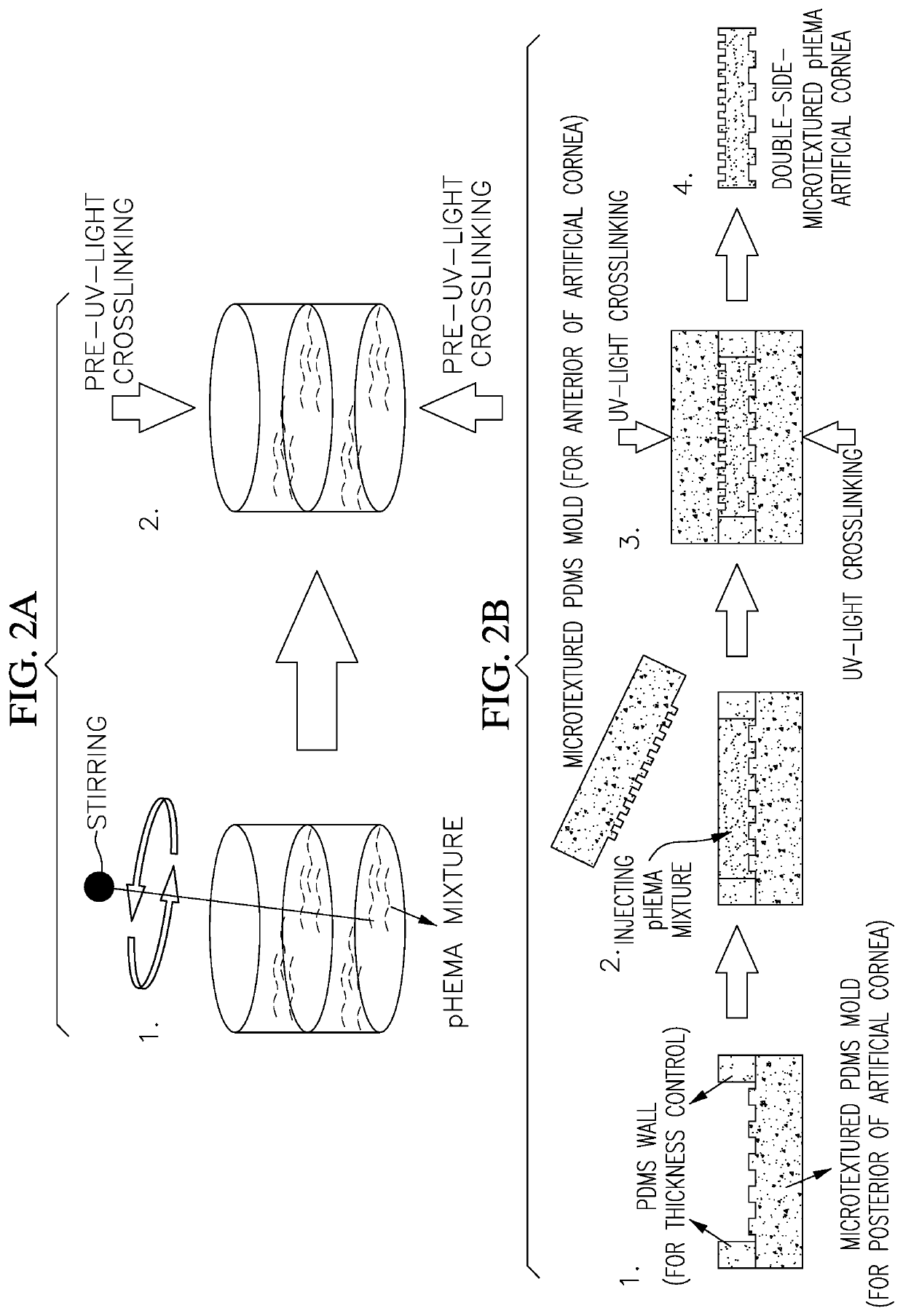Artificial Cornea with Double-Side Microtextured pHEMA Hydrogel
- Summary
- Abstract
- Description
- Claims
- Application Information
AI Technical Summary
Benefits of technology
Problems solved by technology
Method used
Image
Examples
Embodiment Construction
[0025]To give the pHEMA hydrogel the desired microstructure of the final artificial cornea, templates (e.g., silicon masters) having the desired microstructure (i.e., micropores or microlines) are first fabricated. Referring now to FIG. 1A, a UV light lithography process is used to create a microtextured photoresist layer deposited on the top of silicon by shining UV light through a designed micropatterned photomask. The microtextured photoresist layer is used as etch mask in deep reactive ion etching (DRIE) of a silicon wafer. During the DRIE, the photoresist micropatterns are transferred on to the silicon wafer, where only the silicon wafer area uncovered by the photoresist is etched by the etching gases. Therefore, the photoresist mask layer and the silicon master should share the same dimensions of microtextures. The depth of the silicon microstructure can be controlled by varying the etching time in the process of DRIE. The photoresist residue is then removed from the silicon w...
PUM
| Property | Measurement | Unit |
|---|---|---|
| Percent by mass | aaaaa | aaaaa |
| Thickness | aaaaa | aaaaa |
| Thickness | aaaaa | aaaaa |
Abstract
Description
Claims
Application Information
 Login to View More
Login to View More - R&D
- Intellectual Property
- Life Sciences
- Materials
- Tech Scout
- Unparalleled Data Quality
- Higher Quality Content
- 60% Fewer Hallucinations
Browse by: Latest US Patents, China's latest patents, Technical Efficacy Thesaurus, Application Domain, Technology Topic, Popular Technical Reports.
© 2025 PatSnap. All rights reserved.Legal|Privacy policy|Modern Slavery Act Transparency Statement|Sitemap|About US| Contact US: help@patsnap.com



